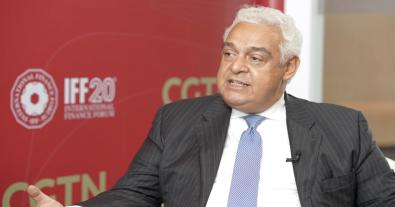When climate negotiators meet at COP29 in Baku, a new climate finance goal will be adopted from a minimum of USD 100 billion per year. The financial resources required to deal with climate change, however, are no longer in the billions per year, as thought in 2009 at COP15 in Copenhagen. Needs are now estimated at between USD 2.4 trillion and a staggering USD 9 trillion per year by 2030 if the world is to remain on a Paris Agreement-compatible trajectory. Financing the transition out of fossil fuels, the required adaptation and the already-experienced damage resulting from climate change requires a more coordinated effort among the UNFCCC, the necessary reform of the Bretton Woods multilateral finance system, innovative fiscal instruments, carbon finance and private sector-driven financial engineering.
1. THE UNFCCC COP PROCESS HAS A HISTORY OF UNMET FINANCIAL PROMISES
At the 2009 UNFCCC COP15 meeting in Copenhagen, Parties agreed that “[…] In the context of meaningful mitigation actions and transparency on implementation developed countries commit to a goal of mobilizing jointly USD 100 billion dollars a year by 2020 to address the needs of developing countries. This funding will come from a wide variety of sources, public and private, bilateral and multilateral, including alternative sources of finance […].” This objective was apparently met with two years delay in 2023, according to preliminary but unverified data from the OECD. The failure to meet the agreed-upon objective led to much distrust—particularly among developing country parties to the UNFCCC and its Paris Agreement. COP27 in Sharm el-Sheikh almost ended in failure had developed countries not agreed on the principle of establishing a Loss and Damage Fund to assist vulnerable countries to recover from the already existing effects of climate change.
2. EXISTING CLIMATE FINANCE TARGETS ARE OUT OF TUNE WITH NEEDS
The COP28 meeting in Dubai in December 2023 led to the UAE Consensus, with the landmark decision to transition away from fossil fuels. Bold steps are necessary to finance the transition, particularly for developing countries, which are simultaneously severely affected by the already clear effects of climate change and the need to green their economies. COP29 hosted by Azerbaijan is set to define a New Collective Quantified Goal (NCQG) on climate finance from a floor of USD100 billion per year to meet the needs and priorities of developing countries. This is far short of the estimated needs, however, with the Financial Times estimating that spending of USD2.4 trillion a year is needed for developing countries alone to shift to clean energy systems. In 2022 McKinsey estimated the required financial resources at a staggering USD9 trillion a year by 2030. Changing scale from billions to trillions to address a more acute climate emergency faces headwinds from a (post-pandemic) global debt crisis and more generally shrinking fiscal space.
3. SEEDS HAVE BEEN LAUNCHED FOR A NEW GLOBAL FINANCIAL ARCHITECTURE
In 2022 Barbados Prime Minister Mia Motley launched the Bridgetown Initiative calling for the reform of the Global Financial Architecture—which dates back to the 1944 Bretton Woods agreements. In particular, it aims at providing emergency liquidity to stop the debt crisis for the most vulnerable countries, expanding multilateral lending to governments by USD1 trillion to build climate resilience in climate-vulnerable countries, and activating private sector savings for climate mitigation and reconstruction for countries that do not have the fiscal space to adopt additional debt.
Seizing the initiative, in June 2023 France’s President Emmanuel Macron convened in Paris a Summit for a New Global Financial Pact highlighting the need to develop solutions to alleviate the debt burden of vulnerable countries, including climate-resilient debt clauses. The September 2023 Nairobi Declaration further called for reform of the multilateral financial system, including through improved leveraging of multilateral development banks’ (MDBs) balance sheets and calling on “world leaders to consider the proposal for a global carbon taxation regime including a carbon tax on fossil fuel trade, maritime transport and aviation, that may also be augmented by a global financial transaction tax (FTT) to provide dedicated, affordable, and accessible finance for climate-positive investments at scale.”
Launched at COP28 and co-chaired by Barbados, Kenya and France, the new International Tax Task Force (ITTF) was established to explore scaleable options for climate levies aligned with the objectives of the Paris Agreement.
4. SOME PROGRESS WAS MADE AT THE WORLD BANK/IMF 2024 SPRING MEETINGS
Amid calls for climate finance debt owed to G20 countries to be converted into unconditional grants and technology transfer, the World Bank announced that it had implemented measures to take on more risks without jeopardising its AAA credit rating—extending the size of its balance sheet for additional climate finance. The bank moved to lower its equity-to-loan ratio from 20% to 19%, freeing up an estimated USD 4 billion per year. The bank’s lending capacity was further enhanced to an estimated additional USD 70 billion, boosted by a USD11bn contribution from the US, Japan, France, Germany and the UK to fund a portfolio guarantee scheme.
5. DISAGREEMENTS OVER FUNDING ARE LIKELY TO MAKE OR BREAK FUTURE CLIMATE NEGOTIATIONS
- The UNFCCC has a range of diverse funds and facilities at its disposal to deploy climate finance.
- The Loss and Damage Fund, which was approved at COP27 and operationalized at COP28, has so far mobilized USD 660 million. The first Fund Board is to meet in Abu Dhabi from April 30 to May 2, 2024.
- Announced pledges for the Green Climate Fund totaling USD 10.3 billion in 2023.
- New pledges to the Adaptation Fund reaching USD 188 million—falling short of the 2023 USD 300 million target.
- Global Environment Facility generated pledges of USD5.33 billion up to 2026.

- According to the OECD these funds and facilities complemented by bilateral public climate finance, climate-related export credits and private finance backed by public climate finance led to meeting the Copenhagen USD 100 billion per year target in 2023. Carbon markets as foreseen under Paris Agreement articles 6.2 and 6.4 could further channel financial resources from developed countries to developing and vulnerable countries.
- While COP29 will seek to deliver the New Collective Quantified Goal for climate finance from a base of USD100 billion per year—it will be necessary to simultaneously pursue the reform process of the multilateral development bank system, which despite the additional fire-power mobilised by the World Bank is still insufficient to overcome the broadening climate financing gap. Additional frameworks such as innovative fiscal mechanisms and a renewed highly indebted countries initiative will be required alongside the UNFCCC COP process.
Materials presented by Edelman Global Advisory. For additional information, reach out to Nikolaus.Schultze@EdelmanEGA.com.










